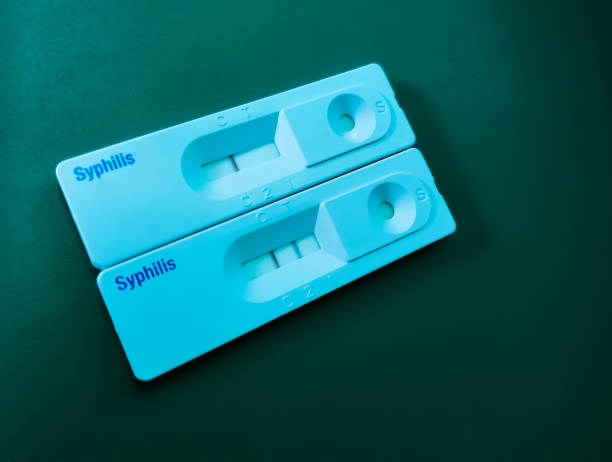In 2000, rates of syphilis infection had declined to the point of near elimination in the United States, with an all-time low of 5979 diagnoses reported that year.1 In the past 2 decades, however, rates have not only returned to previous levels but have drastically surpassed those rates, reaching a record high of 171,074 diagnoses in 2021. This figure represents an increase of approximately 70% compared with rates in 2017 from just 4 years earlier, according to preliminary data from the Centers for Disease Control and Prevention (CDC).2
The proliferation of syphilis across the US and has been observed among multiple patient populations, including those who previously demonstrated a relatively low risk for infection.3 Although men who have sex with men (MSM) are at the highest risk for syphilis infection, syphilis diagnoses have increased by more than 170% among reproductive-aged women.4 Congenital syphilis rates also increased by 235% between 2016 and 2020.5
The populations most affected by this resurgence are those already disproportionately affected by health disparities, including various racial and ethnic minority groups and gay and bisexual men.4
The growth in syphilis diagnoses has accelerated even further since the onset of the COVID-19 pandemic, which led to the deferral of services for 83% of sexually transmitted infection (STI) programs.6
Matthew M. Hamill, MBChB, PhD, MPH, MSc, assistant professor of medicine in the division of infectious diseases at the Johns Hopkins University School of Medicine, cites STI service interruption due to COVID-19, divestment in public health STI clinics, inadequate testing services, and lack of awareness in the general population and among providers as factors that may be driving the resurgence of syphilis in the US.
“
The increase in syphilis among women of childbearing age is concerning, as is the associated rise in congenital syphilis.
Among numerous measures that may help to reduce syphilis rates, Dr Hamill points to the need for rapid diagnostic testing, provider and public education, improvements in prenatal care for at-risk or infected individuals, and vaccine development. There is a need for “more data about the safety and efficacy of STI pre- and post-exposure prophylaxis,” said Dr Hamill. “[Although] not currently recommended, data are emerging to suggest STI post-exposure prophylaxis decreases the incidence of syphilis in men who have sex with men and transgender women,” he noted.
To learn more about the uptick in syphilis diagnoses and steps needed to address its resurgence, we spoke with Waleed Javaid, MD, FACP, FIDSA, FSHEA, hospital epidemiologist and director of infection prevention and control at Mount Sinai Downtown in New York; and Timothy Brewer, MD, MPH, professor of medicine and epidemiology at the University of California, Los Angeles, School of Medicine.
What factors appear to be driving the resurgence of syphilis in the US?
Dr Javaid: This resurgence is likely multifactorial. Over the past several years, with the pandemic taking up a lot of time and resources from health departments, numerous health programs were deprioritized. Health care staff were, instead, dedicated to pandemic response and away from STI prevention activities. Second, many public health departments have been chronically understaffed and under-resourced. Third, initially with the pandemic, most outpatient practices were either closed or transitioned to virtual services, and patients were less likely to seek immediate care. All of these reasons may have contributed to both a decrease in early syphilis detection and an increase in both new and congenital syphilis diagnoses.
Dr Brewer: Approximately one-half of all syphilis diagnoses occur in MSM, and syphilis rates are higher among Black or African American individuals and those of American Indian or Alaska Native descant compared with other populations.3,7 These groups traditionally have had less access to health care than others.
The increase in syphilis among women of childbearing age is concerning, as is the associated rise in congenital syphilis. The lack of timely prenatal care and syphilis testing during pregnancy and the failure to provide appropriate treatment for pregnant women who test positive for syphilis are the main drivers of these increases.
What are recommendations for clinicians regarding prevention and screening?
Dr Javaid: Prompt and proactive screening should continue. It’s important to detect syphilis early and treat it aggressively. Efforts to prevent STIs should be prioritized, and staffing and resources should be appropriately allocated.
Dr Brewer: All women should have access to early and appropriate prenatal care during pregnancy, including syphilis testing as well as testing for other STIs. Women who test positive for syphilis should receive timely treatment and evaluated to ensure that treatment is completed and effective.
Testing for STIs — including syphilis — should occur at least annually among MSM, as well as among those who engage in high-risk behaviors. Individuals with multiple or anonymous sexual partners should be tested every 3 to 6 months.
Women younger than 25 who are sexually active should be screened for gonorrhea and chlamydia annually, and those testing positive for these STIs should be screened for syphilis.
Individuals infected with HIV also should be screened for syphilis, and those engaging in sexual activities with new partners should use barrier methods to prevent STIs.
What broader efforts are needed to help stem this resurgence?
Dr Javaid: More diagnoses mean more potential exposures. A comprehensive response to this should include public education: People should know why STI prevention is important, the impact syphilis may have on our health, and how it can affect the fetus during pregnancy, resulting in congenital syphilis. Also, more public health resources should be allocated to address this resurgence, such as more funds to support the prevention and treatment of endemic diseases, including HIV and other STIs.
Dr Brewer: Public health programs need to be better funded and strengthened to enable appropriate contact tracing, case management, and treatment. Early, effective prenatal care needs to be available to all women regardless of their ability to pay, and health care access needs to be improved for persons of color, those living in under-resourced areas, and other socioeconomically-disadvantaged groups.
Discovered on: 2022-12-16 15:01:02
Source: Clinicians Address the Resurgence of Syphilis in the United States



